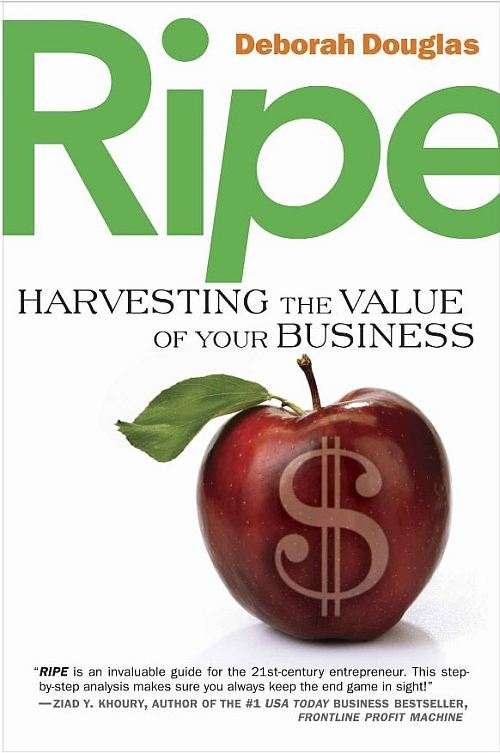What’s Your Company Worth?
Most processors might not really know. Here, an expert offers her insights at a time when M&A activity is growing.

As I wrote in a previous blog, this is a good time to be in the 大象传媒 of melting plastics. More and more existing processing concerns are expanding by adding to their manufacturing footprint and buy new machinery. Processors from Europe and even China are setting up plants in the U.S. to tap into a growing and very optimistic American market.
And, to no one's surprise, this bump in 大象传媒 has also resulted in an uptick in mergers and acquisition activity. Obviously, making an acquisition is another way to expand a 大象传媒. What’s more, when 大象传媒 conditions are good that also presents an opportunity for firms seeking an exit strategy to get maximum value for their operation.
So, what’s your 大象传媒 worth? To help you find out, Plastics Technology reached out to one of the experts in the field. Deborah Douglas is the managing principal of , a St. Louis-based M&A firm that specializes in selling plastics processing companies. Ms. Douglas is a published author of two books, her most recentRipe: Harvesting the Value of Your Business: . She is frequently asked to speak at varied industry and trade events and often serves as luncheon speaker for general 大象传媒 forums. She has been published in numerous trade and 大象传媒 periodicals including Plastics News, ISHN, The Wall Street Journal, Fortune Magazine, and Profit Magazine to name a few.
In this Q&A blog, Ms. Douglas discusses some of the issues processors need to consider to properly evaluate the worth of the 大象传媒 should they be pondering selling it. In two blogs to follow, she’ll offer her tips on how you can be better at selling and buying a plastics processing 大象传媒.

Plastics Technology: So please fill plastics processors in on what’s happening on the M&A front?
Ms. Douglas: There is so much acquisition activity right now that navigating it is really a difficult and hot topic for owners. We are receiving a lot of requests from owners about how to value their companies, and questions on how to proceed in considering sale.
Owners of plastics processing companies have intense interest in the merger and acquisition activity they see, but the primary hook to that interest is a desire to know how much the company they own may be worth in the M&A markets of today.
Plastics Technology: So how do they get started?
Ms. Douglas: The simplistic and most obvious answer to that question involves some sort of multiple of the pretax earnings of the company in question. However, real-life market conditions actually go far beyond that to come to value.
Owners seeking such value probably always need to “start” with a calculation of EBITDA, which approximates cash flow of the enterprise. EBITDA is earnings before interest, taxes, depreciation or amortization. To develop such tally owners also need to make that “owner- neutral” —by adding back or subtracting out any odd-ball impacts on the numbers caused by non-arm’s-length transactions.
Plastics Technology: Owner neutral? Could you provide a specific example?
Ms. Douglas: For example, If the owner takes out salary $ 1 million a year for himself, but his arms-length value (i.e., a sensible fair market value for a replacement person) might be, say $250,000, that means there’s a $750,000 add-back to the numbers to really come up with a fair EBITDA level of performance (restating EBITDA to be “ as if” expense were really only $250k per year).
If, on the other hand, the owner doesn’t take any salary as expense, even though he really does put in hours and work extensively for the company, that company should have a “deduct” to come back to approximate arm’s length EBITDA.
Plastics Technology: What needs to be considered after EBITDA?
Ms. Douglas: After coming to a reasonable fair value of EBITDA for the company, owners then need to estimate what sort of “multiple” of EBITDA their company would likely bring in a competitive buyer market. The average plastic processor could generally estimate that they might get someplace between a 5 multiple and perhaps a 6.5 multiple for sale. That multiple could sink below 5 for a very small enterprise, or for an entity with significant owner dependency, or other problem issues. On the other hand, that multiple could rise above those guidelines, maybe to 7 to 10 for example, for patented proprietary products or technologies, or for ownership of binding long term contracts with customers.
Plastics Technology: What are the kinds of things that tend to drive up value?
Ms. Douglas: The things that tend to push pricing up include:
- Exceptionally high profit levels (15% plus for plastics processors)
- Strong and growing customer base with promising future prognosis
- Outstanding second tier management
- State of the art equipment and facilities
- Well-defined focus, with exceptional expertise in some defined area
- Long term contracts with customers
- Double-digit growth rates
- Strong and stable balance sheets
Plastics Technology: On the flip side, what are the conditions that tend to drive value down?
Ms. Douglas: Things that tend to suck pricing downward include:
- Dependency on one or a few big customers
- Declining margin trends
- Lack of capable second-tier management
- Litigation history
- Lack of growth in recent history
- Below average profitability (EBITDA under say 5-7% for processors)
- Serious capital-equipment needs in the near future
Plastics Technology: Of course if there is more than one prospective buyer that certainly strengthens the seller's position. Is that fair to say?
Ms. Douglas: Regardless of company-specific situations, pricing is always, inevitably, much stronger if the would-be seller is able to find and court multiple competitive buyers. Good competition for any given seller can throw all “norms” for pricing out the window, to the great benefit and happy day for the selling owners.
Our firm sold a company several years ago, which we thought would produce a value of around $30-35 million. As we progressed on the deal, we found that there was one group of particular buyers, who desperately wanted access to our client’s customers. Before we came upon the goldmine of truly great buyers, we had 15 offers for our client. Offers ranged from about $25 million to high $30s. When we found the perfect buyers, we suddenly, in one week, had three offers over $50 million. We closed that deal about 60 days later, at an all-cash price of $67 million. Our client was ecstatic, and we were well-paid and very happy.
Competition can make a huge difference. There’s a quote I like that paints the picture. Al Capone said, “You can get a lot more with a kind word and a gun, than with a kind word alone!” A good competitive selling process is the seller’s gun!

Related Content
Planned Facility to Produce Mechanically Recycled Polystyrene for Food Packaging
EGN, Tomra, and INEOS announced plans to collaborate on a new kind of recycling plant, to be located in Germany.
Read MoreRobotic Sorters With AI Technology Deployed in Fresno Recycling Center
A grant from the Recycling Partnership enabled Implementation of RecycleOS Technology from Everest Labs.
Read MoreRepublic Services and Ravago in Partnership to Build Recycling Capacity
Planned facilities will have a combined output of 300 million pounds of recycled plastics.
Read MorePET Chemical Recycling Process Qualified and Commercialized
Process will be offered as a license package globally by Axens.
Read MoreRead Next
Beyond Prototypes: 8 Ways the Plastics Industry Is Using 3D Printing
Plastics processors are finding applications for 3D printing around the plant and across the supply chain. Here are 8 examples to look for at NPE2024.
Read MoreLead the Conversation, Change the Conversation
Coverage of single-use plastics can be both misleading and demoralizing. Here are 10 tips for changing the perception of the plastics industry at your company and in your community.
Read MoreFor PLASTICS' CEO Seaholm, NPE to Shine Light on Sustainability Successes
With advocacy, communication and sustainability as three main pillars, Seaholm leads a trade association to NPE that ‘is more active today than we have ever been.’
Read More
















